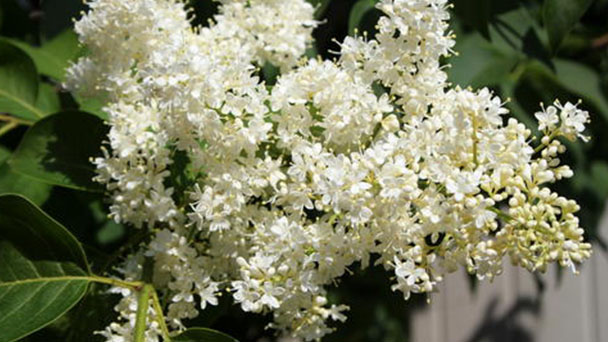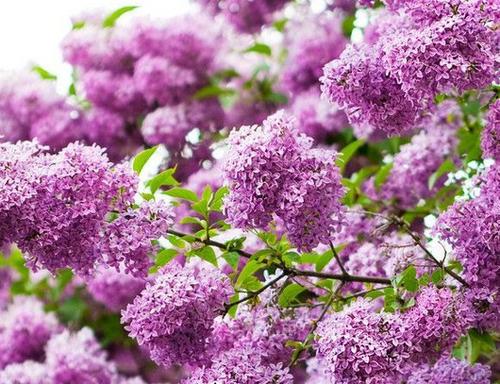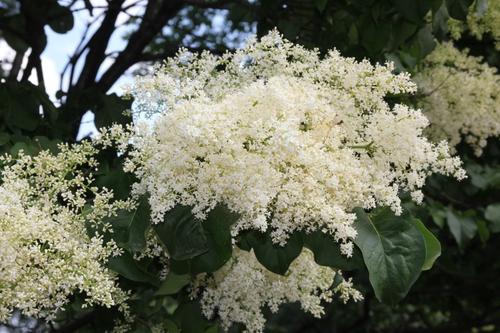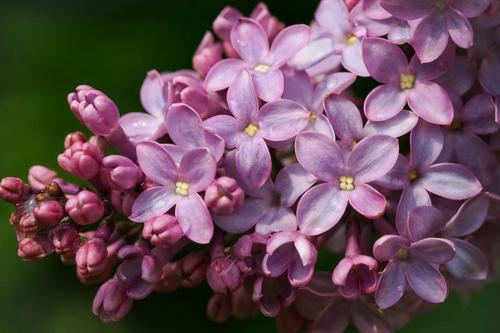Japanese tree lilac (Syringa reticulata) profile
Written by Maggie
Mar 08 2021

Japanese tree lilac is a shrub or small tree, up to 10 meters in height, flowering in late spring and early summer. Japanese tree lilac slope is thickets or forest margins, grasslands, ditches, or mixed coniferous and broad-leaved forests, 10-1200 m above sea level. This kind is fond of light, also can endure Yin, cold, drought, endure barren. Japanese tree lilac mainly produced in northeast China, northwest, north China and other places, Korea, Japan, Russia have distribution.
Japanese tree lilac picture

Japanese lilac tree info
| Botanical Name | Syringa reticulata |
| Common Names | Japanese lilac tree, tree lilac |
| Plant Type | Tree |
| Light | Full sun to partial sun |
| Native Areas | East Asia |
| Mature Size | 20 to 30 feet tall and 15 to 20 feet wide |
| Hardiness Zones | 3 to 7 |
| Flower color | Creamy white |
Morphological characteristics of Japanese tree lilac
Branch
Japanese tree lilac is a deciduous small or large tree, 4 -- 10 to 15 m tall, with erect or spreading branches; Bark is purplish grayish brown with fine cracks. Branches are grayish-brown, glabrous, current year branches green or purplish haloed, glabrous, sparsely lenticellate, biennial branches brown, shiny, glabrous, with more densely lenticellate.
Leaf
Japanese tree lilac leaves are thickly papery, ovate, ovate to elliptic ovate, wide or oblong-elliptic, lanceolate, 2.5-13 cm long, 1-6 (8) cm wide, apex short tail pointed to the caudate acuminate or sharp-pointed, base often round, or cuneate, broadly cuneate to sectional shape, yellow-green, above when yellowish-brown, lateral veins and fine veins obvious concave into the foliage is shrinking, the yellowish-green, autumn is rusty, glabrous, dilute along midrib slightly pilose, midrib and lateral veins raised below; Petiole of Japanese tree lilac is 1-2.5 cm long, glabrous.
Flowers
Panicles of Japanese tree lilac, branched from 1 to many toward lateral buds on the same branch, 10 -- 20(-27) cm long and 8 -- 20 cm wide; Inflorescence rachis, pedicels, and calyx glabrous; Inflorescence rachis are lenticellate; Pedicels are 0-2 mm long; Calyx of Japanese tree lilac is 1.5-2 mm long, calyx toothed obtuse, convex or truncated; Corolla is white, radiate, 4 -- 5 mm long, corolla tubes ca. 1.5 mm, lobes ovate, 2 -- 3 mm long, apex acute; Filaments are as long as corolla lobes subequal or as long as lobes to 1.5 mm, anthers yellow.
Fruit
The fruit of the Japanese tree lilac is elliptic, 1.5-2(-2.5) cm long, often obtuse at the apex, or acute, convex, smooth, or with fine lenticels.
The ecological habits of Japanese tree lilac
Japanese tree lilac; Like warm and humid climate, cold resistance, soil requirements are not strict; Japanese tree lilac likes moist alluvial soil. They are commonly found in mixed mountain coniferous and broad-leaved forest, forest margin, roadside, riverbank and thickets in a river valley at an altitude of 300 ~ 1200m.
How to grow and care for Japanese tree lilac
Temperature
Warm is more suitable for its growth, but also for Japanese tree lilac flowering will have a certain help. In addition, in its habit, its ability to withstand cold is relatively good. Generally speaking, not particularly close to the north, the winter temperature is very cold places, do not need to protect against cold.
Light
Sunshine is sufficient for its growth, and after the flowering, the fruit is helpful If it is left in a very dark environment, it may not flower at all, or it may flower in very few quantities. So, unless it's too strong, don't use shading.
Watering
Japanese tree lilac likes a lot of water in the place, the wild plants will generally be distributed in that moist hillside and other places. So, usually watered enough, but try not to be too waterlogged, or easy to get some diseases.
Fertilization
Japanese tree lilac usually needs fertilizer is not much, one can choose to sow it in a fertile place. After that, topdressing can be done once a month or two months. During the flowering period, pay attention to the application of phosphate fertilizer.
Pruning
It is important to prune branches and leaves in spring. The first is to pluck the heart, not only to make more branches but also to make more flowers later. Dry and yellow leaves also have to be cut off. Again, trim the Japanese tree lilac after they bloom.

Japanese tree lilac propagation
Japanese tree lilac is best to use the sowing method to reproduce. First of all, the seeds should be treated with accelerating germination, preferably soaked in 40 to 45 degrees of water, and then soaked in cold water for two days, and treated with potassium permanganate. The method of "drill seeding" or "broadcast seeding" can be adopted. After sowing, the thickness of the soil cover can be about one and a half centimeters. After that, the soil needs to be watered thoroughly and then shaded from the strong light.
Japanese tree lilac disease control
Common diseases of Japanese tree lilac are brown spots and coal stains. Brown spot usually occurs in the middle of June in the early ten days, can spray 75% chlorothalonil wettable particles 1000 times liquid or 70% mancozeb wettable particles 400 times liquid spray, once every 7 days, continuous spraying 3 to 4 times can effectively control the disease. Coal pollution disease generally occurs in early July to mid - to late August. 43% halicol 3000 times liquid or 75% chlorothalonil 800 times liquid can be used to spray once every 7 days and continuously spray for 3 to 4 times to effectively control the disease.
Japanese tree lilac pest control
Pests that harm Japanese tree lilac include red spiders and leafcutter bees. If there is red spider damage 0.36% matmatine water solution 1500 times to kill if there is a leaf-cutting bee, can be killed artificially, or with 20% insecticidal net 1000 times liquid spray for control.
The brown spot occurred in the early part of June. Prevention and control methods: spray 3200 times of liquid bactericidal star 1 time to the disease and surrounding plants, and then spray 1 time after 7-10 days.
The method of prevention and control was to use 3000 times of liquid to spray the mite once and then spray 1 again after 7 days. The effect was good.
Prevention and treatment methods: 20 days before the onset, spraying 800 times of Bordeaux liquid to prevent the occurrence of the disease; Coal pollution disease appears in a timely way to spray 600-800 times the liquid carbendazim (50% wetted powder) or albacillin (75% wetted powder) 1 time, 7-10 days and then spray 1 time, the effect is good, later with the temperature gradually decreased, the weather is cool, the disease gradually disappeared.
Classification of Japanese tree lilac
S. reticulata(Blume) Hara in journ. Jap. Bot. 17:21.1941.Ligustrum Reticulatum Blume, Mus. Bot. Lugd. -Bat. 1:31.
Japanese in that the leaves of the former are ovate, broadly ovate, or ovoid, rounded to slightly cordate at base, pubescent below, especially dense along the midrib.
The distribution area of Japanese tree lilac
Japanese tree lilac is a variety of the genus Lilac in the family Liloceridae. It is distributed in Korea, the Far East and Liaoning, Heilongjiang and Jilin provinces of mainland China. Japanese tree lilac grows from 100 m to 1,200 m above sea level. It can be found in forest edges, thickets on hillsides, gullies, grasslands and mixed coniferous and broad-leaved forests.
Japanese tree lilac is mainly distributed in the mountainous areas south of the Lesser Khingan Mountains, but only sporadically in the Greater Khingan Mountains. In addition, China's Jilin, Liaoning, North China, Northwest China, Central China and Korea, Russia's Far East, Japan is also distributed.
Varieties of Japanese Lilac Trees:
Tree-form lilacs come in three sub-species, having subtle differences from each other (such as the Chinese being a bit smaller, etc.):
Japanese lilac tree (Syringa reticulata subsp. reticulata)
Chinese lilac tree (Syringa reticulata subsp. pekinensis)
Amur lilac tree (Syringa reticulata subsp. amurensis)
Cultivars are also available. The cultivars generally bear more blooms than the species plant; for this reason, alone, they would be preferred over the latter. Cultivars include:
'Summer Snow': A smaller tree (20 feet tall), this plant is even more tolerant of pollution than the species plant, making it an excellent street tree.
'Chantilly Lace': This is one of a few choices available with variegated foliage. In this case, the leaves bear creamy yellow margins. It becomes 20 to 30 feet tall and 15 to 25 feet wide. Partial sun is better for this type.
'Ivory Silk': This is the most popular cultivar. At a maximum height of 25 feet, it stays a little shorter than the species plant. It begins blooming at an early age, and it bears many panicles.
'Signature': Gardeners truly interested in continuous sequence of bloom love Signature because its panicles, although smaller than those on Ivory Silk, come out a week or two later. Grow both to extend the period that you'll have lilac flowers in bloom.
'Ivory Pillar': This Japanese tree lilac sports a columnar form (25 feet tall and 15 feet wide).
Japanese tree lilac main uses
Tree appearance is beautiful, fragrant, can do nectar source plants and extract aromatic oil, is the park, courtyard and street better green ornamental species. The whole plant can be used as a medicine, its tender leaves, twig, flowers can be modulated health care tea, with Qingrejiedu, antitussive expectorant effect. Japanese tree lilac can treat bronchial cancer, sarcoma, leukemia, hypertension, heart disease, edema, arteriosclerosis and other diseases.

Latest Updated
- Benefits of Bugleweed - 7 Science-backed Health Benefits
- Bugleweed Dangers & Side Effects - Is It Poisonous?
- How to Plant Evergreen Trees - What You Should Know
- When to Plant Evergreens - Grow Guide for Evergreen Trees
- 12 Wonderful Evergreen Shrubs for Your Garden
- 12 Popular Evergreen Plants with Pictures for Beginners
- When And How To Prune A Lilac Bush Like a Pro
- How to Grow & Care for Lilac Vine (Hardenbergia Violacea)
- Japanese Lilac Tree (Syringa Reticulata) Care & Propagation Guide
- Shumard Oak Pros and Cons - What to Know
Popular Articles
- Winter maintenance of Antirrhinum Majus
- How to Grow Terminalia Mantaly Tree
- How to Grow and Care for Crossostephium Chinense
- How to grow Antirrhinum Majus in spring
- Peristeria Elata (Dove Orchid) Profile: Info & Care Guide
- Underwatered Snake Plant (Sansevieria Trifasciata) - Signs And How To Fix
- How to Care for Brazilian Jasmine Plant (Mandevilla Sanderi)
- How to Grow & Care for Graptopetalum Purple Delight in Summer
- Rosa Chinensis (China Rose): Plant Growing & Care Tips
- How to Care for Baby Sun Rose (Aptenia Cordifolia)